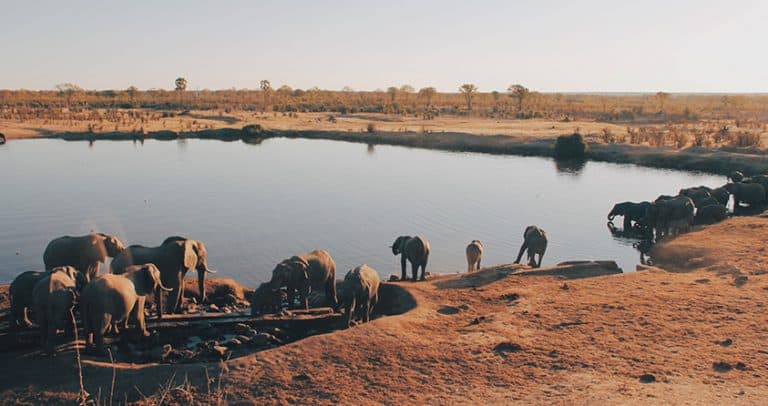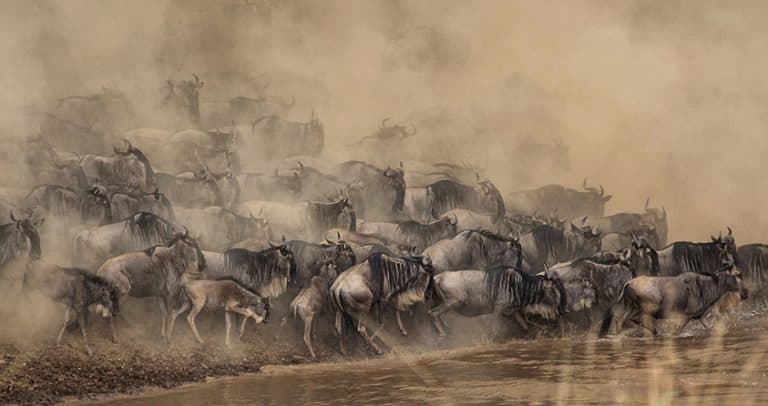Top 5 Best Park To Visit In Africa 2023

Over the past few decades, numerous forms of overexploitation have affected Africa's natural wonders, including its unique animals and birds as well as its open landscapes, dense jungles, and arid deserts.
We are fortunate that governments with a commitment to conservation have taken up the challenge of safeguarding their natural resources and established national parks and reserves.
National parks receive hundreds of thousands of visitors annually, all of whom are eager to get closer to nature on safaris, and these are a crucial tool in providing sanctuary to a stunning array of animals and plants.
The natural wonders of Africa can be seen without risk in these parks and reserves.
Nowadays, the health and well-being of the animals and eco-systems are at the center of the well-managed, conservation-minded, and eco-friendly national park safaris that pass through these areas.
READ ALSO » Best Countries To Visit In Africa For First Timers 2023: Top 14
Are you eager to see what these African parks have to offer? Let's take a look at five of the best parks in Africa.
TOP 5 BEST PARK IN AFRICA 2023
- Kruger National park
- Serengeti National Park
- Hwange National Park
- Masai Mara National park
- Okavango Delta national park
1. Kruger National park

is a UNESCO World Heritage Site and is proud to be one of Africa's largest animal reserves.
It is in the north-eastern part of South Africa and is about the size of Wales. It borders Mozambique along its entire eastern border.
It covers 19,485 km2 and is a vast expanse of stunning bushveld.
Animals can now move much more easily because, in some places, the south western border has been opened up to include exclusive private reserves.
There are a lot of wild animals in Kruger, including the Big Five; buffalo, lion, leopard, rhino, and leopard There are approximately 500 species of birds and hundreds of other animal species.
One of the best safari parks for seeing a little bit of everything is Kruger National Park, which has the greatest animal diversity in Africa!
READ ALSO » Best State To Visit In Nigeria For First Timers 2023: Top 6
Numerous expert guides are available at the park's numerous trails so that visitors can get a close-up look at the wonders of Africa.
There are options for lodging ranging from exclusive luxury lodges to campsites run by national parks, making Kruger accessible to everyone.
2. Serengeti National Park
The Serengeti National Park is one of Africa's most famous landscapes. It is made up of a huge arc of wide, sweeping plains with beautiful, unique, shady trees.
It connects the Masai Mara National Reserve in Kenya with western Tanzania in the north.
Over 500 species of birds and carnivores, including the African Big Five, can be found in the Serengeti.
The wildebeest migration is Serengeti National Park's most famous and distinctive event.
This spectacular annual migration of over 2 million wildebeest, zebra, and gazelles from northwestern Tanzania to Kenya is one of nature's greatest wonders.
The need to find fresh grazing, the seasonal rains, and the game's breeding patterns drive the annual cycle.
READ ALSO » 10 Very Best Cities In Japan To Visit
In most cases, the migration stays in the Serengeti until July, when it enters the Masai Mara National Reserve in Kenya. In November, it returns to the Serengeti.
It only takes careful planning to ensure that you are in the right place at the right time to observe the migration throughout the year.
For instance, the best times to see a lot of wildebeest in the Ndutu area are in February and in June, when they cross the Grumeti River.
3. Hwange National Park

The largest park in Zimbabwe is located in the north-west of the country, between Bulawayo and Victoria Falls.
The park, named after a local Nhanzwa chief, was established in 1929.
Due to its location at the Kalahari's edge, it is extremely dry and sparsely wooded; Zambezi teak, camwood, and Kalahari bauhinia dominate the majority of the park's Kalahari woodland.
There are a few pans and watering holes that get their water from natural ground seepage and seasonal rain, but most of them are filled with water from pumps; In the park, the pump noise of duf, duf, duf is common.
Hwange is best known for its enormous elephant population, which can be observed best at dusk by standing watch at one of the watering holes.
Along with the Chobe region in Botswana, the Hwange elephants are one of the largest groups of elephants on the planet. Lions are at the top of the list of healthy predator populations.
Around the northwest corner, the majority of the total 14,650 km2 is accessible, and there are numerous other species of plants, birds, and animals to observe.
Hwange is a great park where you can see a lot of wildlife and is only an hour and a half away from Victoria Falls.
4. Masai Mara National park

One of the best national park which borders Tanzania and its Serengeti National Park.
The park is composed of open grasslands dotted with single trees, and the Maasai word mara means spotted.
The Mara River, which flows from its source in the Kenyan Highlands to Lake Victoria and is a vital water source where a lot of animal activity takes place, is one of the seasonal rivulets that crisscross the landscape.
Large herds and animal groups, including the annual wildebeest migration, inhabit the vast Masai Mara landscape.
The migration crosses the Mara River from Serengeti National Park and arrives in Kenya in July from Tanzania.
Tension builds as the herds reach the river because they must cross it, but there are dangers nearby.
When the first group enters the flow, the pressure finally breaks, and when the entire herd follows, there is a deluge. Everywhere there is activity.
crocodiles eating their annual meal, aerial wildebeest grunting, and crumbling riverbanks until the herd crosses into the Masai Mara, glistening in the sun on the opposite bank.
The wildebeest and other animals graze in the Masai Mara in August, September, and October before returning to the Serengeti in November.
5. Okavango Delta national park

In the center of Southern Africa, the Okavango Delta in Botswana is a shining jewel.
It spreads out into the Kalahari sands like a huge fan in the northern part of Botswana.
It begins in the Angolan Highlands, where heavy, seasonal rains eventually flow down the Kavango River into the Panhandle on the border between Caprivi and Botswana and into the Delta itself.
A 250 x 150 km area receives approximately 11,000 billion liters of water annually. Botswana is fed by this annual ebb and flow of water, which is a true wildlife haven in the middle of the dry Kalahari.
There are approximately 200,000 large animals living here, but not all of them stay all year. Life is abundant here. In the summer, the animals wait for the rain to come so they can eat the new growth.
Nevertheless, game viewing is a year-round activity in the delta, albeit somewhat restricted during the rainy season.
Small planes transport travelers to exclusive lodges and camps from the heart of the Okavango Delta.
This does indicate that the Delta is a safari destination of the highest caliber, but the rewards include spectacular game viewing, exceptional bird watching, and luxurious camps.
This exclusivity is made even stronger by limiting the size of the camps and the number of visitors, all of which are done in an effort to safeguard the animals' habitat.
It is possible to combine the Okavango Delta with other Botswana's top national parks, such as the Makgadikgadi Pans, Chobe National Park, and the Linyanti, for a truly unforgettable safari experience.
Conclusion,
Listed above are the most largest and biggest park in Africa. We are fortunate that governments with a commitment to conservation have taken up the challenge of safeguarding their natural resources and established national parks and reserves.
